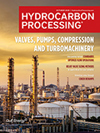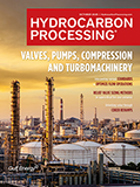Environment
Air Liquide and TotalEnergies to invest more than €1 B in green hydrogen
French oil major TotalEnergies will develop two green hydrogen (H2) projects with industrial gases company Air Liquide, aiming to help decarbonize Total's Dutch and Belgian refineries, they said on Tuesday.
SBM Offshore awarded a study by Petrobras for FPSO CO2 carbon capture solution
SBM Offshore has announced the signature of a study with Petrobras for the application of carbon capture modules on floating production storage and offloading (FPSO) vessels.
Oil refiners adding renewable feedstock to produce cleaner fuels
Oil refiners are increasing their efforts to blend renewable feedstocks such as used cooking oil into their crude refining streams to meet global demand for cleaner fuels.
MOL Group successfully tested the production of HVO and SAF at Eastern European refinery
MOL Group has produced a diesel fuel containing hydrotreated vegetable oil and sustainable aviation fuel at its refinery in Slovnaft, Bratislava, readying the production of alternative synthetic fuels, which is part of the company’s long-term SHAPE TOMORROW strategy.
Pacific Future Energy officially cancels refinery project in British Columbia, Canada
Pacific Future Energy has officially cancelled its proposal to build a 200,000-bpd refinery on the West Coast of Canada aimed at exporting refined petroleum products to Asia.
Magnon project in Huelva to capture biogenic CO2 to produce renewable fuels
Magnon Green Energy, the Ence Group’s energy subsidiary, is promoting a pioneering project for the capture and recovery of biogenic carbon dioxide (CO2) at its biomass-based renewable electricity generation plant in Huelva, Spain.
Liquid Wind announces new eFuel facility project in Örnsköldsvik, Sweden
The new eFuel project will be carried out in close collaboration with Övik Energi as a development partner and supplier of biogenic carbon dioxide (CO2). The new site is planned to be one of Europe's largest facilities for the production of eFuels.
Lummus announces first commercial award for SAP technology
Lummus Technology, a global leader in process technologies and value-driven energy solutions, announced an award from SHCCIG Yulin Chemical Co., Ltd., a subsidiary of the SHCCIG Group, for its superabsorbent polymer technology.
Honeywell, AM Green collaborate to advance carbon capture and sustainable aviation fuel In India
Honeywell and AM Green signed a memorandum of understanding during India Energy Week 2025 to assess the techno-economic feasibility of producing sustainable aviation fuel from ethanol, green methanol from various carbon dioxide emission sources, and green hydrogen.
NH3 Clean Energy, Pilbara Ports sign a MoU on ammonia shipment for WAH2 Project (Australia)
NH3 Clean Energy Limited signed a Memorandum of Understanding with The Pilbara Ports Authority, exploring the options for the loading and export of 600,000 tpy of clean ammonia from the company’s WAH2 Project.

- KazMunayGas and Uzbekneftegaz partner to build 50,000-tpy linear alkylbenzene plant 11/17
- Verso Energy awards FEED contract to Rely for the DEZiR eSAF project 11/17
- Iran confirms seizure of tanker with petrochemical cargo headed for Singapore 11/17
- Allied Biofuels and Praj Industries sign MoU to build Central Asia’s largest ethanol refinery in Uzbekistan 11/17
- Asian gasoline margin spikes to highest since August 2023 11/14
- Lukoil-Moldova grants free use of airport fuel terminal to government amid U.S. sanctions 11/14




